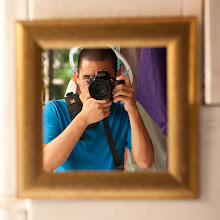There's a few cameras that hold a special place in my heart.
The D200 was my first DSLR that I ever owned.
The D4s was the workhorse that could shoot anything that I threw at it.
And finally, the iPhone 7 Plus proved to me that it is possible to have an extremely capable camera in the palm of your hand.
After owning this phone for a little less than a year, I finally feel I'm in a place to properly review what it is capable of. Long story short, this phone has given me the ability to capture literally anything that I see on a daily basis. As the saying goes, "the best camera is the one you have with you."
This is review departs from my traditional DSLR or lens review, but I think it is very fitting, as the iPhone 7 Plus has, and continues to impact my photography on a daily basis. A heads-up before reading more. This review is NOT about the phone itself (call quality, buttons/controls, OS, durability, etc). What this review focuses on is the cameras of this phone.
First, the specs. The iPhone 7 Plus (for the sake of the review, I will abbreviate as 7P) broke new ground in carrying two cameras: a 28mm f1.8 wide angle, and a 50mm f2.8 telephoto. This was absolutely brilliant by the Apple engineers, as it allows the phone to "optically zoom" without having to house a complex zoom lens that would have added to the thickness of the phone. As you can see in the image above, the lenses are housed next to each other, and work in sync with each other. The default camera is the 28mm, and has a f1.8 aperture, letting in 50% more light than the earlier iPhones. When the user wants to zoom, the 50mm camera is activated. The 50mm is used for Apple's proprietary "Portrait Mode" (more on that later). According to Apple, around 1 billion calculations are made by the 7P's processor each time a photo is taken, which is pretty mind blowing!
For more 7P photos, feel free to check out my Instagram, which majority of the images were shot on the 7P.
|























































Love the pics :)
ReplyDelete